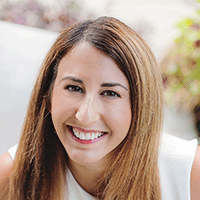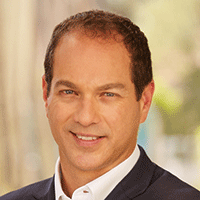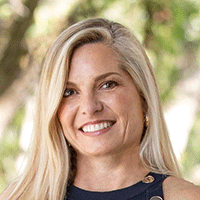
22 of the BEST Pieces of Social Media Marketing Advice From Top Realtors
Learn what works for Realtors—and what doesn’t—on each social media platform.
Brian Loebker, with Michael Saunders & Company in Siesta Key, recently went on a $2.5 million listing presentation. The seller saw his print ad and scanned a QR code to his social media video. Another time, Loebker closed a $6.5 million transaction after the soon-to-be customer bumped into an old friend of Loebker’s while jogging. She opened her smartphone and showed him Loebker’s social media videos. “The jogger messaged me later that day and wanted my guidance,” says Loebker. “From day one to closing took less than five months.”
Loebker relies heavily on social media as a driver for success. He’s got 17,400 organic followers on Instagram and 4,500 on LinkedIn. He also has about 5,500 Facebook followers and friends and boasts video on YouTube with more than 12,000 views.
Want to learn from Florida real estate agents who are crushing it on social? We talked to these top-performing agents who shared their best real estate social media marketing tips.



—Loebker




1. Use Longer Videos on Facebook. While our Instagram strategy relies heavily on quick video snippets (15 seconds or less), we tend to be most effective on Facebook with longer video reels and impactful highlights (one minute or longer). Our first video on Facebook was a professionally produced origin story about Spears Group, representing every team member. The video was two minutes long and garnered over 25,000 organic views in just two weeks.—Spears
2. Engage with your followers. I’ve found the most success on Facebook with my Welcome to Palm Coast and Lauren Tries Videos, where I record myself trying local restaurants and businesses. My exposure reached 7,000—12,000 views per video— and increased my business page following by 1,000 in the last six months. This is all because I’m engaging with the community and sharing content they want to see.—McPherson
3. Run ads—they’re worth every penny. The Facebook Paid Ads platform is the most amazing, unrivaled tool we have as agents. It’s a bit complicated at first, but easy enough to learn. Even with the new Fair Housing restrictions, you can still make Facebooks ads walk and talk with a few clicks of a button. Nothing is as powerful as the video engagement ads. They produce incredible results, especially because they allow you to re-target (or re-market) potential clients in the same way Amazon follows you around the internet after you [search for] a pair of shoes!—Loebker
4. Hire an expert. If you’re not a social media expert, hire someone who is. I hired one to set standards for me and one to maintain my accounts. If you do your own research and watch enough how-to videos on YouTube, you can do it yourself. But if you’re not good at it or don’t have time for it, outsource it.—Perkins
5. Take a themed approach. We find that keeping posts short, using emojis and bullet points, and integrating video helps us maximize viewer engagement. We love having themed posts (such as Transformation Tuesday, showing before/after photos of a recently staged listing). We do a Meet-my-inner-circle Monday post where I talk about my assistant, photographer, stager, etc., and share a few fun facts about them.—Ferreira

1. Position yourself as a trusted advisor. Where I find value is within my higher net worth clients and trusted advisors. These may be doctors, attorneys, CPAs and financial planners whose professions frown on them being overly active on traditional social platforms. LinkedIn has shown itself to be the safe place for trusted advisors. So, by sharing insights or small successes—behind the scenes on LinkedIn—has proven exceptionally valuable.—Loebker
2. Use LinkedIn for exposure. This is the third-most-effective website for getting exposure. What I post on LinkedIn is far less personal—it’s much more professional content. This platform is more for posting production awards and accolades to demonstrate your professionalism. I also post industry-related articles because people are in the work mindset on LinkedIn.— Perkins
3. Promote your brand more than your listings. Our brand is very active on LinkedIn, posting three to four times per week. The target audience of businesses and business leaders lends the perfect platform to highlight our team’s expertise in real estate and market insights. —Cusack

YouTube
1. Integrate YouTube with your website. We love posting longer videos on YouTube and use our Spears Group page as a full quiver of marketing that showcases a comprehensive portfolio of what we offer. We integrate the marketing efforts on YouTube with our company website (spearsgroupfl.com) to maximize SEO and exposure.—Spears
2. Use YouTube as your video archive. All my videos live on my YouTube page. If someone asks a question on Facebook about a particular neighborhood, I copy the YouTube link to my video featuring that neighborhood and share it on Facebook. Or, if someone asks for a good Realtor® in the area, I send them the YouTube link to my introduction video—especially helpful for out-of-staters. —McPherson
3. Attract people further down the sales funnel. People use this platform for “intent-based search,” meaning they know exactly what they’re looking for. This allows you to target people much further into the idea of buying or selling than those who see you on Facebook. You can target these people by being smart in your video titles and descriptions and through paid ads. —Loebker
4. Post a variety of high-quality content. I showcase a home by posting one- to three-minute videos that are well-shot, creatively directed, with pleasing background music. These “hype videos” are meant to engage with both serious and casual viewers and designed to catch the eye. I also post “lifestyle” videos showcasing the agents on our team.—Blankenship
5. Tap local experts. We have a very deep library on our company’s YouTube channel, which is linked to all our other social pages and communications. While we do produce high-quality videos of our listings, we also feature videos of me interviewing real estate industry experts and local business leaders. —Cusack
The bottom line? “Understanding your audience, how to reach your audience, and what they want to see is extremely important,” says Blankenship. “That might require you to shift what—or when—you’re posting to better reach your target audience. Listening and responding to feedback is key!” #
Lisa A. Beach is a Winter Springs-based freelance writer.
